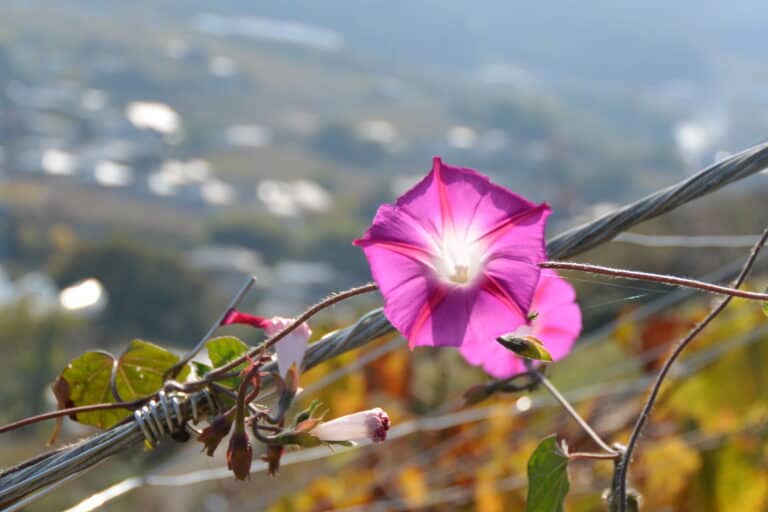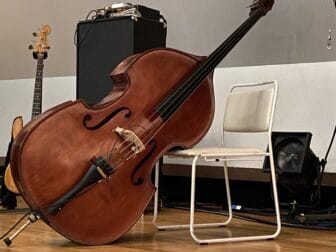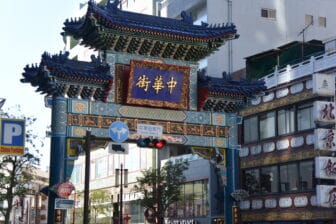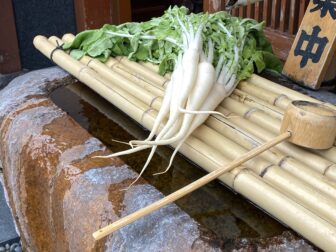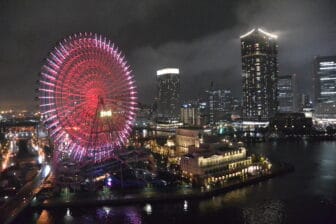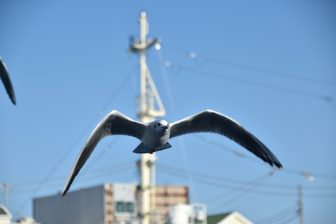Japan
Population of Japan:126.860.00
Language: Japanese
Currency: Yen
Time Zone: 8 hours or 7 hours (in summer) ahead
Area Code: +81
Automotive symbol: J
Electrical system: Type A (JIS 8303, Class II)
National Flag: A red circle on a white background
Embassy: The Italian Embassy is located at: 2-5-4, Mita, Minato-ku, Tokyo 108-8302 Tel: 0081334535291 / 0081334535292
Flights: Milan-Tokyo, Rome-Tokyo. Direct flights @ 12 hours
Best time to travel: from the middle of March to May and then in October and November
Documents required: Passport
Health care: Health insurance recommended
TRAVELLING IN JAPAN AND WHAT TO SEE
There is still a widespread belief that travelling to Japan is very expensive. This goes back to the times before the introduction of the Euro when the exchange rate between the Italian Lire and the Japanese Yen was particularly unfavourable.
Nowadays, because of the devaluation policies of the Japanese Government, a holiday in Japan isn’t very different to holidaying in Italy cost-wise.
Nevertheless, it is advisable to book in advance because at certain times of the year, there are a lot of crowds as tourism in Japan is still largely made up of Japanese nationals although the number of foreign visitors has increased dramatically in the last few years.
A tour of Japan typically includes visits to Tokyo and the cities with important art works nearby such as Nikko or Kamakura and the areas of Kyoto, Nara and Osaka.
On these more centralised routes, it is also possible to include a visit to Hiroshima, and, if you have more time, it is worth travelling more towards the south of Japan in order to visit some of the important sites on the island of Kyushu such as Fukuoka and Nagasaki.
For individual travellers in Japan, what to see and when, in Tokyo for example, can prove a bit of a dilemma but it is also a chance to obtain a more in-depth knowledge of the place.
Amongst the things which are of most interest to younger tourists who are curious about Japanese Manga and Anime (Japanese styled animation), is the Akihabara area of Tokyo.
Although it is now on the list of things peculiar to Japan because of its Maids Cafes and being a sort of paradise of otaku (for people who are obsessive about Mange and Anime), until just a few years ago, it was more famous for the numerous shops in which you could find all the latest electronic and technological gadgets.
Other unmissable spots in Tokyo are Ueno, Shibuya or even less well-known places such as Shimokitazawa which is a somewhat “alternative” neighbourhood where, even though most Japanese music has only become famous through animated cartoons, you will discover an interesting underground scene.
For further recommendations with regard to what to see and do, we suggest that you have a look at the section on destinations on this web site.
CLIMATE AND BEST TIME OF YEAR TO VISIT
The Japanese climate is quite varied due to the span and latitude of the archipelago.
From the last week in March until the middle of April, you can enjoy the cherry-blossom season. Temperature-wise, May is probably the best month.
In June the rainy season of the plums (tsuyu) begins: the sky is often cloudy and a light drizzle accompanies the Japanese everywhere until the middle of July. At this point, a torrid heat hits them along with the deafening roar of the cicadas.
For those who choose to take a holiday in Japan at this time of year, remember that the heat continues until the end of August making way for plenty of rain and winds in September which are caused by the typhoons.
Autumn is still a good time to visit and in November you can enjoy beautiful landscapes amongst the red autumnal leaves.
GEOGRAPHY AND NAME
Japan is an island state made up of more than 3,000 islands.
Looking at a map of Japan we can see that it is made up of 4 main islands: Hokkaido, Honshu, Shikoku and Kyushu.
The capital of Japan, Tokyo, and the other important commercial centre, Osaka, which is more to the south, are both located on the island of Honshu.
The Japanese archipelago forms an arch facing the coasts of Siberia, Korea and China which delineate the Sea of Japan.
Its location to the east of China is connected to the significance of the word “nippon,” which derives from the Japanese word Nihon which means “The Land of the Rising Sun,” (that is, in the direction from which the Chinese saw the sun rising).
The origin of the name Japan came from the Chinese pronunciation of the word ripen (pronounced jipen) as reported for the first time in Marco Polo’s Milione (Book of the Marvels of the World).
THE HISTORY OF JAPAN
There are various theories regarding the origins of the Japanese nation.
What has emerged from more recent studies is that the current inhabitants of Japan are the fruit of a mingling throughout the centuries of peoples from different areas of the world, principally from the regions of Siberia, Korea and China, but, there are many linguistic affinities with Austronesian peoples from South East Asia and Taiwan.
The first Japanese, amongst whom are included the Ainu, retreated to the island of Hokkaido giving birth to the Jomon culture that lasted until the end of the 3rd century BC.
During this period which was known as the Yayoi period (the Japanese Iron Age), there was a strong influx of Korean peoples who brought with them their knowledge of metals and the cultivation of rice which produced a noticeable change in culture and society, gradually leading to the foundations of a centralised state based on the Chinese model and which was built around the figurehead of the Emperor.
This process started with the Kofun Period (250-538 AD.) and finished with the Nara Period (710-794 AD) which was characterized by an affirmation to Buddhism and calligraphy.
During the Heian period (794-1185) a refined courtly culture and greater spread of Buddhism began to unfold, outlining the original profile of some aspects of Japanese culture that still exist today.
During the Kamakura period (1185-1333), a process of decentralization of central power began with the corresponding emergence of groups with strong territorial links. In this period and the next, power was in the hands of three principal players.
These were the aristocrats, the emerging military class and the great Buddhist temples that were interconnected with a complex network of different relationships.
The delicate balance between these powerful groups was threatened on several occasions leading to numerous conflicts that would lead to the emergence of an extremely powerful military class known as the bushi (warriors).
With this massive presence of warlike monks, the large monasteries represented a fearsome military force.
In this context, the Imperial establishment lost a large part of its actual power but it did manage to retain its authority with regard to symbolic and religious aspects.
The following centuries were distinguished by continual conflict between these powerful groups which culminated in the Sengoku period (the Warring States period) at the end of which, some of the charismatic military leaders succeeded in reunifying the country under the control of a centralized government.
And this was the beginning of the Tokugawa era, also known as Edo (1603-1868), which was the ancient name by which today’s Tokyo was originally known.
The Edo era was characterized by two and a half centuries of relative peace but, the frequent economic crises and pressure from the West lead to a change in power at its peak which started the Meiji era (1868-1912) which was distinguished by a race to modernization and systematic research into how to build a state that was based on the Western model.
Within a few decades, the process of modernization enabled Japan to rival Western powers, which has continued, whilst still seeking internal mediation with the country’s traditional culture. Japanese expansionism during the years preceding the Second World War ended by bringing Japan into direct conflict with the United States with the attack on Pearl Harbor signalling Japan’s entrance into the arena of war.
The Japanese-American conflict resulted in the defeat of Japan which was marked by the dropping of atomic bombs on the cities of Hiroshima and Nagasaki.
The post-war reconstruction efforts were the breeding ground of a new economic miracle that propelled Japan into the club of economic world giants as it earned its position in the vanguard of many industrial sectors and at the forefront of scientific research.
RELIGION IN JAPAN
The religion of Japan can be defined by various phases that are related to outside influences which have merged with pre-existing elements.
In the eyes of those who travel to Japan on holiday, this seems to be a country that is characterized by the presence of two main components: Shintoism and Buddhism.
In actual fact, we find two main types of religious buildings: shrines and temples.
The first are recognisable due to specific characteristics such as their portals (torii) which are traditional Japanese gates.
The shrines, which are called jinja, are the sites of Shinto worship whereas the temples, o-tera, are places of Buddhist worship.
The view that most Japanese have about their country’s religions corresponds to this division of two main faiths: a more ancient indigenous religion and the other, Buddhism, which has been imported from abroad.
However, it is necessary to point out that, until the beginning of the Meiji period, these two religions were closely connected with each other and the religious landscape that was apparent to those who embarked on a visit to Japan at the end of the of the 19th century would have been something completely different.
Originally, in places of worship, there was no real separation between Buddhism and the elements of indigenous religions and various other divinities which were then classified as Shinto and the encounter with which gave birth to and developed these two religious currencies.
The separation between Buddhism and Shintoism took place during the Meiji period with high-level intervention intent on creating a coherent image of the national religion that might be more acceptable to Western eyes and at the same time, would consolidate the position of the government which had been built around the figure-head of the Imperial House whose mythical identity (the oldest dynasty in the world) is exalted.
In any event, the population of Japan has largely continued to be faithful to both religions.
Whilst the “sacred offerings” at Shinto shrines are linked to annual rites that reflect the different stages of life such as the children’s festival, marriage, the sale of amulets, etc., the activities of the Buddhist institutions, whilst not excluding the sale of amulets and protective images, is more strongly linked to the carrying out of funeral rites and the religious practices that are linked to the cult of the ancestors.
Historically, in the development of Buddhism can be seen the creation throughout Japanese history of numerous religious threads due to which, it is more correct to speak of “Buddhists” than of Buddhism.
Amongst these are the ancient sects of Nara which occupies a prominent place in Shingon and Tendai Buddhism as well as the Zen school which is linked to the Buddhism of Pure Land and Nichiren Buddhism.
An important religious current during the medieval and modern periods is Shugendo, to which the “yamabushi” (mountain ascetic hermits) belong.
This religious thread, in which elements of the indigenous religion and Shintoism were closely linked, was abolished at the end of the 18th century (in the post-war period it was re-established but without ever reaching the splendours of previous times).
After the Meiji period, in a process that still continues today, we are seeing the emergence and development of new sects, whether they have been created from scratch or whether they have arisen from within the ancient schools of Buddhism or Shintoism.
Traditional festivals, known as matsuri, are still of great importance and these are celebrated at different times of the year by the Japanese population.
PARTICULARITIES OF JAPAN
Japanese Taxis
Japanese taxi drivers are kitted out in blue uniforms with white gloves.
Unlike elsewhere in the world, Japanese taxi drivers don’t get out of their cabs to open the door but instead, they use a lever next to the seat which opens and closes the rear doors of the vehicle (only on the left-hand side).
Therefore, you should keep your distance and should not touch the door of the taxi. And, they will not assist you, even with your luggage.
In Japan it is not customary to tip the taxi-driver.
Chopsticks and good table manners
A traditional Japanese meal consists of small portions of numerous colourful dishes that are served together on the same tray.
The Japanese use chopsticks to eat with and food is served in bite-sized pieces so that they can be easily raised to the mouth.
There is no need to cut anything up: if something is of a slightly larger size, it can be broken up with chopsticks.
One hand is used for the chopsticks and the other is used to pick up plates and bowls and bring them closer to your mouth so that the food doesn’t drop on the table.
You should never leave your chopsticks in a dish of rice or other foods as this is considered to be very bad manners. The only time that chopsticks are left in the rice is when an offering is made at the altar for the souls of the dead.
When not in use, the chopsticks can be placed on a plate or on a chopstick rest (hashioki).
In the event of a buffet, quite often there are chopsticks on trays or bowls that you can use to serve yourself. If this is not the case, use one end of the chopstick to serve the food and the other end to eat.
And, if you love Japanese cuisine, you can find plenty of useful addresses on our pages dedicated to Japanese restaurants in Italy.
Bowing
The Japanese bow to each other at times when a westerner would shake hands, when they greet someone or say goodbye and also when they are expressing thanks or regret.
When you bow to them, bend at a normal height and don’t change the angle of your head. Your eyes should be slightly lowered.
Your legs should be kept straight and your heels should be joined.
A man holds his hands close to his body and a woman stretches her hands in front of her, gently resting one against the other.
The lower ranking person, (due to age, social status, business position, etc., will determine the rank) maintains a longer and lower bow than the person of higher rank.
When the Japanese talk face to face, they do not make direct eye contact. They consider this to be intimidating behaviour. It is not interpreted as a sign of interest or respect but as an indication of challenge on the part of the person who is speaking.
It is also worth knowing that sometimes the Japanese smile not only when they are happy or amused but also when then are sad or embarrassed.
In general, they avoid showing negative emotions in public because they don’t want to make others feel uncomfortable.
The Word “Hai”
When a Japanese person speaks, you will probably hear them say the word “hai,” at the end of each of your sentences.
If you think he is agreeing to everything you say because “hai” means yes, there has probably been a misunderstanding.
In this instance, it actually means, “I am listening to you.”
Some people may actually nod or make noises of approval instead of saying “hai.”
Christmas and New Year’s Eve
The majority of Japanese people do not celebrate Christmas.
For them, Christmas is just a normal day like any other.
However, they do celebrate New Year’s Eve and the preparations for this celebration of the New Year is very detailed.
The whole nation takes part in the particular rituals as the end of the year approaches.
On New Year’s Eve, they eat soba (thin Japanese buckwheat noodles) either with a cold sauce or in a warm broth.
It is expected that you will gobble them up loudly.
The idea is that everything in the New Year will go smoothly, just like the noodles going down your throat.
New Year celebrations can last from three to seven days, during which time, all the houses are open (except for those that are in mourning).
The Japanese visit their superiors and the people they work with in the New Year as well as their families, relations and friends.
They also send greeting cards for the New Year, just as we in the West send Christmas cards.
At New Year, they come to visit the Shinto Temples to ask the various divinities for a prosperous new year.
The New Year’s holiday is a lovely time for children as they receive money from all the relatives that they see.
Addressing letters and cards
In Japan, hagaki are very popular (simple postcards).
You write the name of both the sender and the recipient on the front of the postcard: larger characters are used for the recipient and smaller characters are used for the sender. The message is then written on the back of the postcard.
There are special cards every year for the New Year wishes as well as cards for the summer season.
With regard to letters, the name and address of the recipient are written on the front of the envelope in larger characters with the name and address of the sender on the back in smaller characters.
Post Offices are distinguished by the symbol: 〒
In addition to postal services, they also offer banking and insurance services.
You will need to go to the Post Office for stamps, postcards and other general postal services.
Personal Stamps
In Japan, people do not sign documents with their own name as is done in the West. Instead, they use a personal stamp known as “hanko” which has exactly the same significance and importance as a signature.
Each time Japanese nationals wish to withdraw or deposit money in the bank, they are required to use their personal stamp.
Ainu music concert in Ueno
[Nov. 2023] After walking around Kameido in Tokyo, we moved to Ueno. We were going to listen to an Ainu music concert at Ueno Bunka Kaikan. At my friend’s suggestion, we took a bus from…
The next day was sunny
[Feb. 2023] On the second day in Yokohama, Japan, the sun was shining and completely opposite of the bad weather of the previous day. And it was warm, too. If we had planned this trip…
The clam hot pot and Daikon radish in Kameido
[Nov. 2023] At the invitation of a friend of ours who lives in Tokyo, Japan, we went for a walk around Kameido, a part of downtown Tokyo, which she had never walked before, either. We…
The clam hot pot and Daikon radish in Kameido
[Nov. 2023] At the invitation of a friend of ours who lives in Tokyo, Japan, we went for a walk around Kameido, a part of downtown Tokyo, which she had never walked before, either. We…
Thanks to our ‘angel’
[Feb. 2023] We spent a whole month in February this year with my elderly mother in Japan. On this day, the whole family (mum, my sister and her husband and us) was supposed to travel…
the tuna bowl and sightseeing boat in Misaki
[ Dec.2019 ] After enjoying Umanose Domon on the Jogashima Island in Miura City in Japan, we walked to Jogashima Lighthouse. There was a path above Umanose Domon and the view from there was picturesque,…

